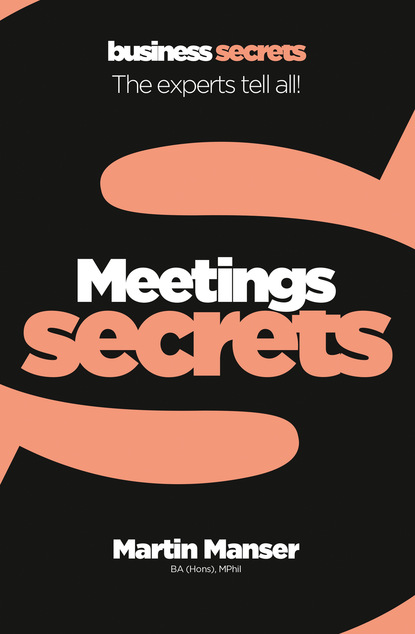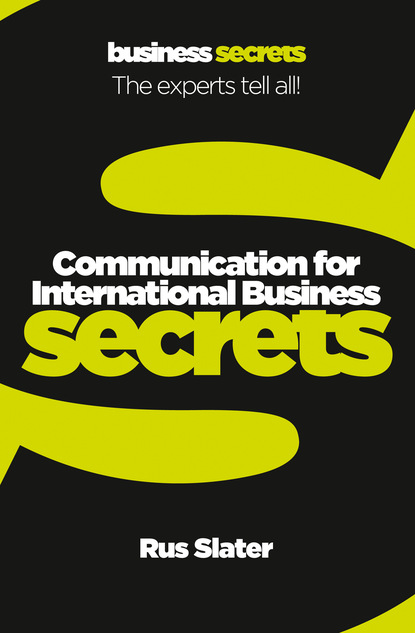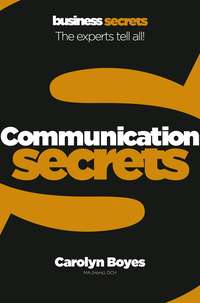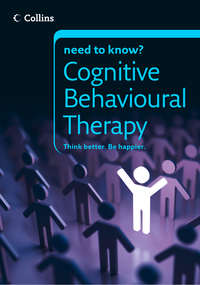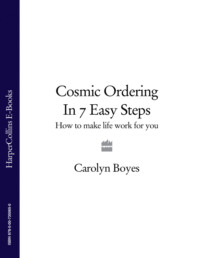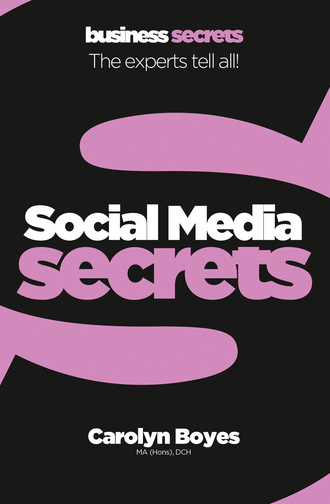
Полная версия
Social Media

SOCIAL MEDIA SECRETS
Carolyn Boyes

Copyright
William Collins
An imprint of HarperCollinsPublishers
1 London Bridge Street
London SE1 9GF
WilliamCollinsBooks.com
This eBook first published in Great Britain by William Collins in 2020
First published in Great Britain in 2020 by HarperCollinsPublishers
Published in Canada by HarperCollinsCanada. www.harpercollins.ca
Published in Australia by HarperCollinsAustralia. www.harpercollins.au
Published in India by HarperCollinsPublishersIndia. www.harpercollins.co.in
Copyright © HarperCollinsPublishers 2020
Carolyn Boyes asserts the moral right to be identified as the author of this work.
A catalogue record for this book is available from the British Library.
All rights reserved under International and Pan-American Copyright Conventions. By payment of the required fees, you have been granted the non-exclusive, non-transferable right to access and read the text of this e-book on-screen. No part of this text may be reproduced, transmitted, down-loaded, decompiled, reverse engineered, or stored in or introduced into any information storage and retrieval system, in any form or by any means, whether electronic or mechanical, now known or hereinafter invented, without the express written permission of HarperCollins.
Source ISBN: 9780008389833
Ebook Edition © January 2020 ISBN: 9780008133801
Version: 2019-11-18
Contents
Cover
Title Page
Copyright
Introduction
1 Plan
1.1 Ditch the old thinking
1.2 Know your channels
1.3 Create a brand
1.4 Make a promise
1.5 Create a goal
1.6 Stake a claim
1.7 Draw up a content strategy
1.8 Be aligned
1.9 Take an inventory
1.10 Do it 24/7
2 Promote
2.1 Be sociable
2.2 Determine your ideal customer
2.3 Convert the grazers
2.4 Build a community
2.5 Become a friend
2.6 Inspire
3 Post
3.1 Start a blog
3.2 Tweet
3.3 Create a Facebook page
3.4 Link in
3.5 Video it
3.6 Share slides
3.7 Instagram it
3.8 Blog on Tumblr
3.9 Pin it on Pinterest
4 Position
4.1 Lead opinion
4.2 Have values
4.3 Look consistent
4.4 Have a tone of voice
4.5 Use professionals
4.6 Google well
4.7 Network offline
5 Monitor
5.1 Listen and learn
5.2 Monitor
5.3 Use surveys
5.4 Use hashtags
5.5 Find the influencers
5.6 Use professional tools
6 Be real
6.1 Be authentic
6.2 Get feedback and endorsements
6.3 Go off topic
6.4 Hang out
6.5 Start a competition
6.6 Be memorable
6.7 Contribute to the conversation
7 Follow web etiquette
7.1 Be nice
7.2 Know your copyright
7.3 Manage your crises
7.4 Keep up with the news
7.5 Stop the muggers
7.6 Do good
Jargon buster
Further reading
About the Book
About the Author
About the Publisher
Learn how social media can be your best business secret
Social media is essential to businesses and anyone who already has, or wants to have, a career in business. Through social media you can talk to people, learn new information and gain new clients. You can build a business brand across international boundaries, cutting out middlemen and saving costs.
My own background in business began when talking to clients around the world meant sending letters, taking long flights or making very expensive phone calls. The advent of emails made communication easier but still limited contact to a targeted list of clients. Social media has changed everything.
When social media first came along it seemed to be just another form of entertainment. People quickly realized that it was fun to have conversations with strangers, post pictures of their cat playing the piano or comment on a newspaper blog. However, businesses soon realized that social media could be used as advertising. Now social media has progressed even further and become a vital part of any business strategy. If I want to find a client I no longer need to identify them one by one. Once I have clients I don’t need to phone or visit them. Instead, using social media, I can keep in touch with anyone anywhere in the world and show them what I have to offer using words, pictures and video. Social media is now a gigantic global conversation and a global business must.
Business Secrets: Social Media consists of 50 secrets in total, divided into seven chapters.
▪ Plan. Start afresh. Learn how the world has changed and that social media is the most effective tool for the success of your business.
▪ Promote. The whole world can become your marketplace. Think how you can build a community of followers who will turn into customers for your business.
▪ Post. There are so many different social media tools now. Discover which ones you should use and what the best ways are to use them.
▪ Position. Use social media to build a long-term brand on the web which will grow your business for years to come.
▪ Monitor. By keeping in touch with what your customers want you can consistently tweak your social media presence and make it effective.
▪ Be real. Social media is entertaining and fun. Don’t just have a business conversation: be human. Be entertaining.
▪ Follow web etiquette. Observe some basic guidelines and legalities online just as much as you do in your offline business.
If you follow these seven chapters, you will know everything you need to know in order to use social media effectively for yourself and your business. People will know about you and your brand and, more importantly, they will want to become your clients.
Social media isn’t just fun, it’s also the future of your business.

The world has changed. The mindset of the business world has had to shift enormously from even a few years ago. Over the last decade we have seen the globalization of the marketplace and an enormous appetite to buy, research and socialize online. No business can afford to be offline now. But a website is not enough. You need a strategy for multiple social media platforms.
1.1
Ditch the old thinking
In the past, if you had a business you probably had an office, possibly a shop, and you advertised your products or services in the press and via a website. You would broadcast without really knowing who was listening to you. If a customer wanted to give feedback to a business they would need to write a letter and wait for a response. Now so many people use social media the whole process has been speeded up: from weeks to seconds.
Social media and old media are very different. With old media you could only have a one-way conversation between the business and its prospective customers. You can talk to your customers and they can talk back to you. There are other differences, too:
▪ Old media markets to a mass, unknown audience. Social media is a way of tailoring your marketing to one person at a time.
▪ Old media is written by professional marketers. Much of social media content is generated by users and commentators in response to what you post.
▪ Social media channels are open, democratic and responsive. Content can be forwarded and adapted by its users, unlike with old media.
“TV took 30 years to reach 50 million people. Facebook took 2 years” Anon
one minute wonder Think about marketing your business on social media in a professional way. Do your research and look at which channels your users follow. Not every channel will be used by the same type of user. Start by thinking about the top five reasons why you want or need to use social media.
▪ Marketing on old media is usually highly edited and polished. Posts and commentary on social media are rougher but often more authentic.
▪ Users pay to access old media: newspapers, magazines and TV. Social media is usually free for the user. You can access it when you want and from where you want.
▪ Old media is controlled by the owners and the business which pays for the content. Social media content is jointly controlled by the user.
▪ Old media is often focused on people in a particular country. Social media is global.
You can use social media to share news and expertise, upload product images and videos, write a weekly blog and start discussions. It can become a promotional tool for your business; helping to build your business brand and customer base as well as your profits.
Create a marketing plan that suits social media, not old media.
1.2
Know your channels
Social media sites are known as channels and social media can be accessed via the internet or apps. The number of channels is expanding all the time and its influence on our lives is growing.
If you have a business you can use social media to win customers and build a brand in a fun and entertaining way across global borders. Although new channels are added all the time, here are some you must get to know if you are going to promote your business effectively:
▪ Facebook is one of the most popular social networks in the world. Every day it is used by billions of people. Individuals, groups and businesses all have Facebook profiles.
▪ Twitter is a ‘microblogging’ site – a place where you can write short posts of up to 140 characters. It has become a source for people to get instant information on the news and post comments and pictures, even videos and links to blogs.
▪ LinkedIn is the biggest professional social networking site. Employers increasingly expect professionals to provide a link to their LinkedIn profile before getting hired.
▪ YouTube is the largest video broadcasting and sharing site of content such as vlogs (video blogs), music videos, talks and movie-making. Find everything from funny videos to how-to videos on here.
“These days, social media waits for no one” Aaron Lee
one minute wonder Take the time to look at how your competitors are using these channels to create social networks and online communities by tweeting, blogging, posting and sharing. Social media is very different from advertisement-buying activities and other types of digital marketing.
▪ Instagram is a highly popular sharing site for photos and short videos and has helped the craze for celebrity ‘selfies’ – a picture of yourself.
▪ Pinterest is a place where you can create your own pinboard of images that you have collected and share them with your followers on the web.
▪ Tumblr is similar to Pinterest. Here, you can set up a blog, determine a theme and post all sorts of content.
▪ Snapchat is an instant messaging mobile social network. It is based around the idea of videos and photos that self-destruct after viewing.
▪ Vine is a video-sharing app. The short (up to six-second) videos can be embedded in a tweet or shared in emails or on other sites.
Use social media to make your products and services easily accessible and desirable.
1.3
Create a brand
What makes businesses successful is that they are always clear about their brand and where they are positioned in their marketplace.
The idea of a brand is simple. It is the thing for which you are most recognized. For example, London has Big Ben, Paris the Eiffel Tower, Nepal is known for Mount Everest. Think about a business like Virgin. Richard Branson, the owner, cleverly created a brand around himself and his business, creating a memorable name and image.
You don’t need to own a multi-million-pound business to have a great brand. Some of the best brands on the web are one-person brands. Even teenagers, posting comments and producing videos from their bedrooms, are creating valuable brands on social media. A brand is an interpretation of yourself and you can show off that interpretation across Twitter, Instagram, Google Plus or any platform you choose.
“Setting up an account is not a strategy” Businessweek
Think about what is at the core of your brand and how you want to show that to your social media audience.
▪ What do I do for a living? Do I want my brand to be around me, the person, or around the business I am involved in?
▪ What is my Mount Everest? What am I most known for? What is the core of my business?
▪ What is unique about my business? What makes me stand out from my competitors or other people like me?
▪ Why would people be interested in listening to what I have to tell them? When I meet people at a party, what do they ask me about?
If you don’t have all the answers immediately, that’s fine. It’s better to take your time than rush into social media and change your brand. That will just confuse people.
case study Zoella is a hugely successful vlogger on YouTube and has created a strong brand from small beginnings. She films short videos of interest to her audience and has a big teenage following. Her brand has been so successful that it went offline. She makes appearances off screen and was even asked to write a book which sold in large numbers to her fans. Her brand was helped by the fact that she dated another successful YouTube star and they have made videos together, creating an even-better-known joint brand.
Think about what you stand for and how to differentiate yourself from your competition.
1.4
Make a promise
Most of social media is free so commitment to a brand isn’t shown with money but with attention or inattention. To get that attention you need to offer a promise to people.
What difference do you want to make? What impact do you want to make? All great brands promise us something. Take a brand like Coca-Cola or Pepsi. Many drinks quench your thirst, so why buy a branded drink which costs more? Simply because the brand seems to promise more.
Some brands last for generations even though the products are very different. What do Disney, McDonald’s, Twinings and Burberry really promise you that keeps you loyal to them? We will all pay more if someone or something makes us feel better. That’s why advertisers show us adverts populated with people we want to aspire to be like. For some of us, that means buying a product associated with the perfect home and family; for others it means a link with being young and fashionable or being different and anti-establishment.
Sometimes the brand promise is obvious and sometimes it takes time to think through. Start by considering what makes your business stand out from its competitors. By knowing what makes you different you can work out what you are really promising to give people when they connect with your brand.
“Your brand is the single most important investment you can make in your business” Steve Forbes
Take a political information company, for example. What makes them different? Information is available from dozens of sites on the web. For one company it may be their humorous presentation of the news, for another the fact they are always first with the news or they have politicians rather than journalists working for them, so they are the first to learn about what really goes on in the corridors of power.
Perhaps you run a bakery. Isn’t selling cakes and bread and buns just about feeding people? Not necessarily. Perhaps it’s the way your posts of cakes in retro fifties’ settings make people feel as if they are living the domestic goddess dream. You promise the lifestyle with every product you sell.
Think about what makes you different and what your brand can promise its customers.
1.5
Create a goal
Who would have imagined when Twitter or Facebook began that the most famous brands in the world would be competing for space with people posting updates from their bedrooms? But that’s what has happened – social media is still sociable and fun but it has also become a serious platform on which to do business, and one-person bands can compete with the big players.
However, there’s no point getting involved in social media and just setting up accounts here and there because everyone else is doing it. Take an inventory of what you are already doing and what your competitors are doing, then SMART:
▪ S is for Specific. Be specific with your goals. Set some objectives for how many channels you are going to use, and what you are seeking to achieve.
▪ M is for Measurable. All your goals should be measurable so you know whether you are achieving them or not.
▪ A is for Achievable. What is it going to take to achieve your goals? Do you have the resources available? Can you make it happen by yourself? If not, who can help you?
“Media was very one way … Now the internet is allowing what used to be a monologue to become a dialogue” Joseph Gordon-Levitt
one minute wonder Be specific about what you want to achieve by marketing your business on social media. An increase in customers? Growth in market share? A rise in net profit? A jump in average order price per customer? Total revenue growth?
▪ R is for Realistic and Relevant to your business. Do you need to do this? What will happen if you do? What will happen if you don’t? What won’t happen if you do or don’t?
▪ T is for Time. All good goals have a timeframe attached. Think about the long term and the short term. Then consider what is the easiest first step for you to take.
Create Specific, Measurable, Achievable, Realistic and Relevant goals with a Timeframe attached.
1.6
Stake a claim
The social media landscape is rather like the old Wild West gold-mining towns. There’s definitely gold out there but if you don’t put a stake in the ground to claim your territory then someone else will get there first and your brand is gone.
Once you have your brand make sure you start buying the websites, Twitter name, Tumblr accounts and blogs with the right name or names for your business and any products or topics you want to stake a claim to.
But even if you’re not sure whether you are going to use a particular social media channel immediately, it is worth grabbing your place, especially with a new channel launch. The social media and digital worlds are so fast moving that a small channel may have hundreds of millions of users next year. If you’ve already got your brand name set up you won’t need to worry about someone else taking it. Choose a consistent name across the channels, or if you have more than one brand, think through which channels are suitable for which brands.
Make sure you get your accounts ‘verified’ or authenticated where appropriate so that people know the accounts are real. You will notice on Twitter, for example, that verified accounts have a tick next to them.
one minute wonder Social media can be used as a way of reducing the costs of training staff. You can post videos and content online for your staff or run interactive seminars through apps like WizIQ. Interesting, interactive content will increase the learning experience.
The average user has more than one social media account and this number is likely to rise. However some users do still find a community they enjoy most and spend the majority of their time there. It’s a complex situation for business. You need to know your users and also not spread yourself too thin.
Make sure you buy all the relevant account names you need before you begin, even if you don’t use them immediately.
1.7
Draw up a content strategy
Free content is everywhere on the web. It’s one of the biggest changes that the digital world has brought us. It is said that there is more information around in the last five years than in the whole of human history. Your content needs to make an impact to be noticed.
In the past people expected to pay for content. Now, users get it for free but they are still greedy for interesting new content every day.
Consider what products or services you are going to produce and promote. Then think how you can do this through interesting content that people will want to search for, print and save or forward to their friends.
Content can take the form of long or short blogs (posts about a particular subject, product or service), short tweets on Twitter, webinars, slideshares, photographs, videos on YouTube or Vine, e-books or infographics. This gives you a lot of scope for interesting, visual ways to present what you do.
Think about your three top products or services. Why would someone want them? How would they help them? What would make them buy them? Now think about how you can create three short pieces of writing which you can use as blog posts. Or perhaps you would like to write an e-book and promote it through ten or so regular blog posts that you post over a series of weeks?
“The first lesson of branding: memorability. It’s very difficult buying something you can’t remember” John Hegarty
one minute wonder When you are planning your content, only post when you can answer the three ‘why’ questions: Why this form of content? Why now? Why this channel? If your answers aren’t clear then delay or ditch the idea and think again.
There are so many choices. What about presenting the same information visually? How about laying it out as a PowerPoint? Or as a series of webinars? Would do you want to present? What if you could engage experts to present that information for you and interview them in a collection of videos? Perhaps you are going to present the information in multiple ways. Are you going to do it all at the same time or create anticipation by posting over a period of time?




